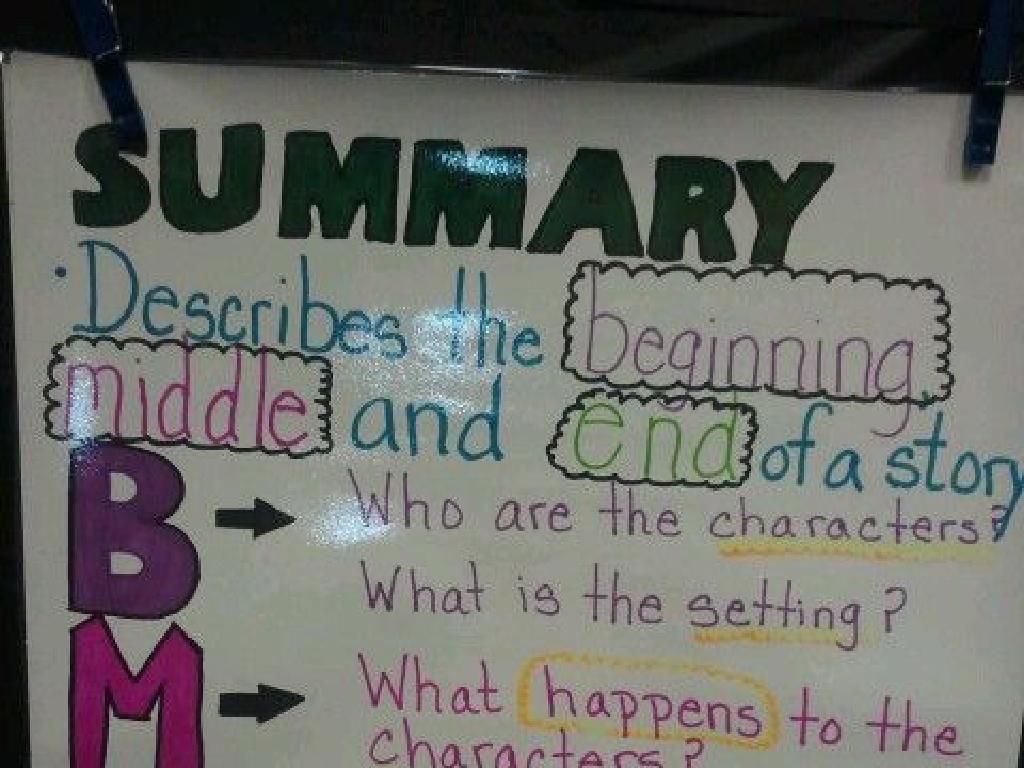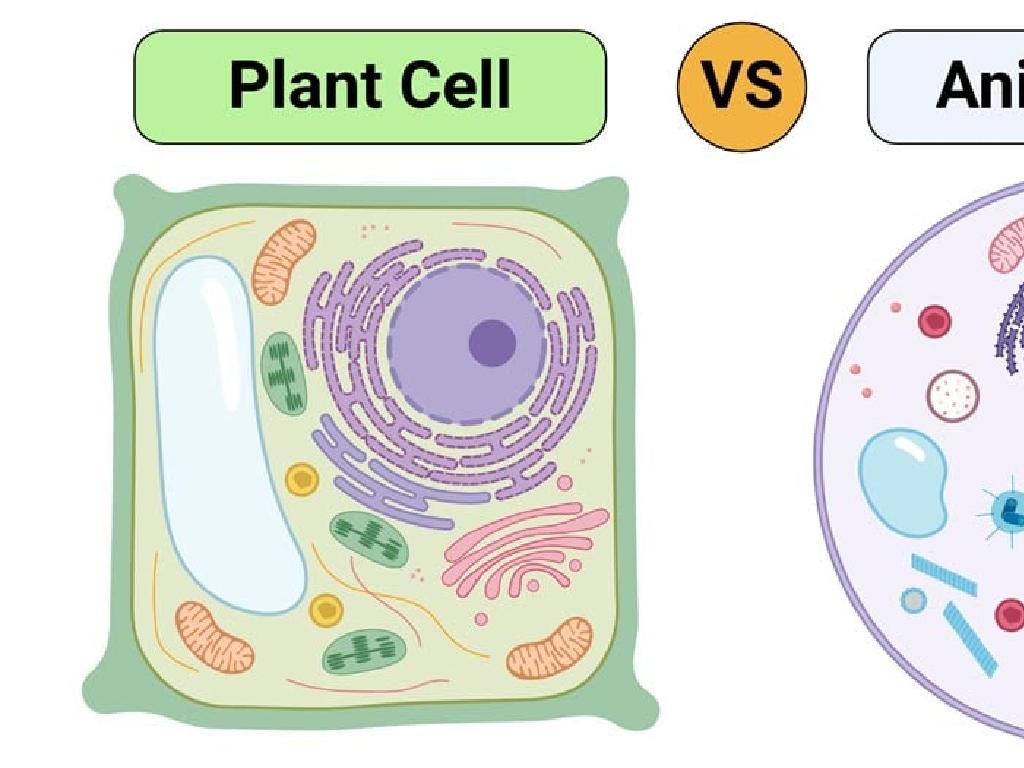Use Context To Identify The Meaning Of A Word
Subject: Language arts
Grade: Second grade
Topic: Context Clues
Please LOG IN to download the presentation. Access is available to registered users only.
View More Content
Welcome to Context Clues!
– Become a word detective today
– Learn to figure out new words
– Use the story to find word meanings
– Discover what context clues are
– Hints or clues in sentences around a word
– Practice using context clues
– We’ll try finding meanings together in class
|
In this introductory slide, we’re setting the stage for second graders to understand the concept of context clues. The goal is to make them excited about becoming ‘word detectives’ and to understand that they can use the words and sentences around an unfamiliar word to figure out its meaning. Context clues can be definitions, examples, or descriptions that help illuminate the meaning of the word without needing to look it up. During the lesson, we will practice this skill with various examples and encourage students to apply it to their reading both in and out of class. This foundational skill will aid in their reading comprehension and vocabulary development.
Understanding Context in Sentences
– Context is a helpful friend
– Think of context as a buddy in reading
– It gives hints for new words
– Like a secret code to solve word mysteries
– Words have ‘friends’ that give clues
– Words in a sentence are not alone; they have buddies nearby!
– Let’s find word clues together!
|
This slide introduces the concept of context to second-grade students in a friendly and relatable way. Context is explained as a ‘helpful friend’ that provides hints to understand the meaning of new or difficult words they encounter while reading. Emphasize that just like friends help each other, words in sentences are surrounded by other words that help define them. Encourage students to look for these ‘friend’ words, or context clues, which could be synonyms, antonyms, explanations, or examples that help reveal what the tricky word means. In the next class, engage students in activities where they work in pairs or groups to find context clues within sentences and explain word meanings to each other, fostering a collaborative learning environment.
Types of Context Clues
– Definition clues in sentences
– When a new word is explained right there in the text.
– Synonym clues help find meaning
– Words nearby that have the same meaning can give hints.
– Antonym clues show opposites
– Opposite words nearby can also give good hints.
– Example clues for understanding
– Sometimes, examples are used to show what the word means.
|
This slide introduces the concept of context clues to second-grade students, which are hints that authors give to help readers figure out the meaning of new words. Definition clues provide a direct explanation within the sentence. Synonym clues use a word with a similar meaning to give a hint. Antonym clues use a word with the opposite meaning to provide insight. Example clues offer instances that illustrate the word’s meaning. Encourage students to look for these clues in sentences when they come across words they don’t know. Practice with examples in class will help solidify their understanding.
Using Context Clues
– Read the entire sentence carefully
– Understand the sentence around the tricky word
– Look for signal words for hints
– Words like ‘or’, ‘is’, ‘like’, ‘means’ can be clues
– Make a guess for the unknown word
– Use your guess to replace the tricky word
– Check if the sentence makes sense
– Reading it again to see if your guess fits well
|
This slide aims to teach second-grade students how to use context clues to identify the meaning of unfamiliar words. Emphasize the importance of reading the whole sentence, not just the difficult word, to understand the context. Highlight signal words that often indicate a definition or explanation follows. Encourage students to make an educated guess about the word’s meaning and then reread the sentence to see if it makes sense with their guess. Provide examples and practice sentences where students can apply these strategies. This will help them become more independent readers and improve their comprehension skills.
Let’s Practice Context Clues Together!
– I’ll read a sentence aloud
– Guess the meaning using clues
– Look for hints around the new word
– Write down your guess
– Think about what makes sense in the sentence
– We’ll discuss as a class
|
This slide is for an interactive class activity designed to engage second-grade students in using context clues to determine the meaning of new words. Start by reading a sentence that includes a new vocabulary word. Encourage students to listen carefully and use the surrounding words and phrases as hints to infer the meaning of the unknown word. Ask them to write down their guesses before sharing with the class. Facilitate a discussion where students explain their reasoning, and guide them towards understanding how context clues work. This activity will help reinforce the concept of context clues and improve their vocabulary skills.
Example Time: Understanding ‘Vanished’
– ‘The rabbit vanished! It’s like it disappeared!’
– What does ‘vanished’ mean?
– ‘Vanished’ is similar to ‘disappeared’
– Finding context clues
– Clues are in the sentence that help us guess
– Let’s solve the mystery together
– We’ll use clues to figure out ‘vanished’
|
This slide is aimed at helping students understand the concept of context clues through a practical example. The sentence provided uses the word ‘vanished’ and immediately follows it with a similar word ‘disappeared,’ which serves as a context clue. Encourage the students to look for such clues in sentences to infer the meaning of unfamiliar words. Discuss how authors often provide synonyms, descriptions, or explanations that help readers understand new vocabulary. Use this opportunity to engage the class in a discussion, asking them to find and share similar examples from their reading experiences.
Your Turn to Be Word Detectives!
– I’ll show sentences with new words
– Use detective skills to find meanings
– Look for clues in the sentence to guess the word’s meaning
– Think about the words around the new word
– Clues can be descriptions, examples, or opposites in the text
– Share your word discoveries with the class
|
This slide introduces an interactive class activity where students will practice using context clues to determine the meanings of new words. Provide sentences that contain new vocabulary and ask the students to use their ‘detective skills’ to infer the meanings based on the surrounding words and phrases. Encourage them to look for specific types of context clues such as definitions, synonyms, antonyms, and examples provided in the text. After they have made their guesses, facilitate a discussion where students can share their answers and reasoning with the class. This activity will help reinforce the concept of context clues and improve their vocabulary and reading comprehension skills.
Class Activity: Context Clue Hunt
– Read a story as a class
– Hunt for new vocabulary
– Find words you haven’t learned yet
– Guess words’ meanings using clues
– Use the sentences around the new word to help you guess
– Record your guesses and meanings
– Write down the new word and your guessed meaning in your notebook
|
This class activity is designed to engage second-grade students in the practical application of using context clues to determine the meaning of unfamiliar words. As the teacher reads a story aloud, students will be encouraged to listen carefully and identify new vocabulary. They will use surrounding sentences and words to infer the meanings of these new words. Students should write down their findings, which will later be discussed as a class to reinforce their understanding of context clues. This activity promotes active listening, critical thinking, and group discussion. Prepare a list of potential words from the story that may be new to the students and be ready to guide them through the process of using context clues.
Review and Share: Context Clues
– Review discovered words
– Share meanings with a partner
– Exchange the words and their meanings you found in your book
– Discuss context clue usage
– Explain how sentences around the word helped you
– Reflect on the learning process
– Think about how this strategy will help you with new words in the future
|
This slide is meant to facilitate a collaborative review session where students will engage with their peers to share and discuss the new words they have discovered through their homework. Encourage students to articulate how they used context clues to derive the meanings of unfamiliar words. This will help reinforce their understanding of context clues as a reading strategy. Teachers should circulate the room to listen to discussions, provide guidance, and ensure that each student is both sharing and listening. This activity not only solidifies the concept of context clues but also fosters communication skills and peer learning.
Detective Work: Finding Word Meanings
– Congrats, word detectives!
– Practice: Key to becoming a clue master
– Homework: 5 new words with clues
– From your reading book, note down unfamiliar words and the sentence they are in.
– Get ready to share your discoveries
– Think about what each new word could mean and how you figured it out.
|
This slide wraps up the lesson by praising the students for their efforts in becoming ‘word detectives’ and emphasizes the importance of continuous practice. For homework, they are tasked with finding five new words in their reading book and writing down the context clues that helped them understand the meanings. Remind them to look for hints within the sentences where the words appear. In the next class, students will have the opportunity to share their findings, reinforcing their learning and allowing them to learn from each other’s detective work. Provide guidance on how to identify context clues such as definitions, examples, antonyms, or synonyms provided in the text.






